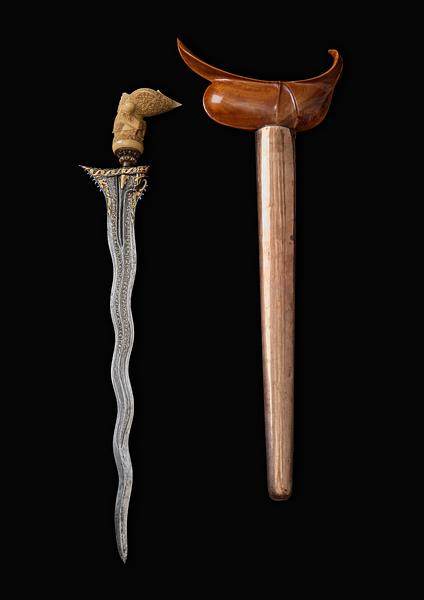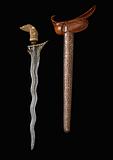This sculptural weapon is known as a
kris (or
keris), the preferred sidearm for men in countries such as Malaysia, Indonesia and the Philippines up until modern times.
[1]The hilt is shaped like a stylised human or animal figure with a pointed, bird-like head. The figure is known as
Java Demam (the fever-stricken Javanese) but is also associated with the bird creature Garuda from Hindu mythology.
[2] While hilts of this shape were widely used, the meticulously carved reliefs with curls and flowers as well as the diamond-encrusted gold ferrule that separates the hilt and blade are characteristic of Sumatra.
[3]The flame-shaped blade is forged from several bars of steel with the layers folded over and over, causing the surface to shimmer in darker and lighter tones. The blade is also decorated with inlaid gold, and given that the decoration on a
kris traditionally reflected the wearer’s social standing, this piece must have belonged to a member of the elite.
[4]In addition to signifying status, the
kris was also believed to have talismanic powers, and the gold-inlaid symbols and inscriptions adorning both sides of the blade were probably intended to strengthen such properties. The Arabic inscriptions consist mainly of Koranic quotations. Initially, the Koran’s
sura 112 is quoted in its entirety. This
sura, which describes the eternal and indivisible nature of God, was ascribed powerful protective properties throughout the Islamic world. The letters of the text are written out separately and without the joining strokes normally seen in Arabic script, an action which supposedly increased the talismanic effect of the inscription.
[5]The sheath (18b/2022) has a characteristic sculptural wooden locket, while its main body is made of
suasa – an alloy of gold and copper which has a faint pink tinge.


